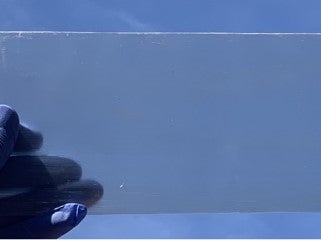Scientists have developed a method to produce a form of transparent wood that can provide an environmentally friendly alternative to glass windows.
The method involves brushing the hydrogen peroxide over the surface of the wood, leaving it in an ultraviolet light to simulate natural sunlight, before dipping it in ethanol and filling the pores with a transparent epoxy.
The resulting material is lighter and stronger than glass and offers much better insulation than glass.
University of Maryland researchers said the process alters a structural component of wood called lignin, which prevents light from passing through the material.
Transparent wood was previously pointed out as a way to improve the heat retention properties of a building, being also biodegradable and easier to dispose of than glass.
Previous methods used to make transparent wood involved complete removal of lignin using aggressive chemicals, which resulted in a weaker piece of wood.
The new method actually makes the wood more resistant, according to the researchers, while significantly reducing the energy required to produce it.
“Transparent wood is lighter and stronger than glass,” said Liangbing Hu, a professor at the Maryland Institute of Energy Innovation who led the research.
“It can be used for support windows and roofs. It can potentially be used to make a house transparent. “
Transparent wood is already being developed in car tactile panels
(Woodoo)
Transparent wood has not yet found widespread commercial use as a building material, however, a form of “augmented wood” has been used to create touch screens on car panels.
A Paris-based startup claims to be “bioengineering the next generation of nature” through its wooden touch screens.
Woodoo uses wood from regenerative forests to create translucent displays that are three times stronger than the original wood and more fire resistant.
